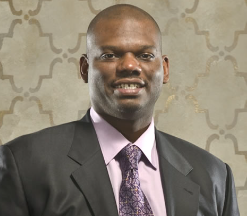By Jarrell Dillard
In the wake of George Floyd’s murder, JPMorgan Chase & Co., Citigroup Inc., Wells Fargo & Co. and other large U.S. lenders began investing hundreds of millions of dollars in Black-owned banks — an attempt to help meet the needs of underserved borrowers as systemic racism became part of the national conversation.

More than a year later, executives at the Black-owned banks say the cash infusions have allowed them to increase lending and expand their staffs, giving support to the African-American community amid pandemic-era uncertainty. Still, while the funding has been useful, the lenders say they need additional investment to shrink racial inequality in financial services and ensure their longterm survival. The number of Black-owned banks has been cut in half over the past 20 years.
“Black banks are always going to have a need to raise more capital, because we just don’t have access to public markets the way majority banks have,” said B. Doyle Mitchell, president of Washington-based Industrial Bank, founded in 1934 and the oldest commercial bank owned by African Americans in the Mid-Atlantic region. “These investments will get us to a certain size and a certain increased level of profitability, but if you want to take an institution to the next level, you’re always going to need additional capital.”
JPMorgan, Citigroup, Wells Fargo and Bank of America Corp. made an estimated $300 million in equity commitments in minority-owned banks — mostly Black-owned firms, alongside Hispanic-owned lenders — starting in June 2020. Morgan Stanley also committed $14.6 million in equity grants, according to the National Bankers Association, and additional investments have come from other institutions.
The investments were intended to help Black-owned lenders add branch locations, assist with their digital transformations to become more competitive and allow them to increase their loan originations. “The idea is to create more jobs, more lending to businesses that will flourish in the longer term, and to create wealth for minorities and people of color,” Bank of America Vice Chairman Anne Finucane said in September 2020, when her company invested $50 million in three Black-owned banks.
Such lenders will need even more long-term capital and regulatory changes, said Nicole Elam, president of the Washington-based National Bankers Association, which represents minority-owned firms. While there’s no across-the-board dollar amount that would resolve underfunding at Black-owned banks, Elam said, she noted that such firms have an average asset size of less than $334 million, compared with $4 billion for non-minority U.S. banks.
While the investments this year and last represent a tiny fraction of the biggest banks’ capital — JPMorgan alone had assets totaling $3.4 trillion last year, and Bank of America $2.8 trillion — there are limits on how much large U.S. lenders can make in equity investments: Giving out too much money too quickly could impact publicly traded minority depository institutions’ capital ratios.
And when it comes to backing smaller Black-owned lenders, many of them closely held, there are other constraints. Wall Street firms have been eager to work with minority-owned banks on capital-markets deals in which they can share fees, giving the smaller firms the chance to ultimately win business on their own. But those projects take time, aren’t easily scalable and often involve Wall Street executives training their counterparts from the smaller banks.
Only 18
Wealth inequality between Whites and African Americans correlates directly to a shortage of capital at Black-owned banks. The lenders also are disproportionately impacted by financial crises, with their customers typically hit harder during economic downturns. Many Black-owned banks failed in the years following the Great Recession. While there were 41 such lenders in 2001, only 18 still remain, according to the Federal Deposit Insurance Corp.
Closely held Industrial Bank was among the lenders — alongside such Black-owned firms as SCCB Financial Corp., Optus Bank, First Independence Corp. and M&F Bank — to draw investments from Wall Street firms in the aftermath of Floyd’s killing by a Minneapolis police officer in May 2020. Industrial Bank received $16.5 million in equity investments between May and September of this year from Citigroup, Wells Fargo, Bank of America and JPMorgan, and a $5 million grant from Morgan Stanley last year, Mitchell said.
Building up Black-owned banks is hardly a new idea, with leaders dating back to Abraham Lincoln, Booker T. Washington and Martin Luther King Jr. advocating the use of such lenders to create wealth in the African-American community. At mainstream financial institutions, African Americans are more likely to be turned down for loans and charged higher interest rates than their White counterparts. Black-owned banks provide an alternative source for personal loans, home mortgages and business financing.
Optus received equity funding from seven banks, including Citigroup, Wells Fargo, JPMorgan and Bank of America. The support has allowed the Columbia, South Carolina-based firm to recapitalize, more than double the number of its front-line bankers and lending support staff, invest in technology and double the loan volume on its books. The vast majority of the financial support has been used to target underserved communities along with minority- and women-owned businesses, said Chief Executive Officer Dominik Mjartan.
The financial support that began last year has helped lenders that were struggling. Commonwealth National Bank, a Black-owned bank based in Mobile, Alabama, was classified as a “troubled” institution by the Office of the Comptroller of the Currency in 2009 and placed under a consent order in 2015. Over the past year, the bank has received equity investments from Bank of America and Wells Fargo, and a grant from Regions Financial Corp.
The funding helped Commonwealth get the consent order removed and allowed it to increase its legal lending authority, letting it provide financing to businesses that mainstream institutions might deem risky, CEO Sidney King said. The bank was also able to increase the size of loans it issues.
At Industrial Bank, executives intend to use the fresh funding to assist first-time homeowners with down-payment or closing-cost assistance. The lender also plans to improve its technology, setting up digital options for mortgage applications and other services, and open a new branch in Largo, Maryland, along with supporting an innovation center to provide mentoring and training of Black and other minority business owners.
The survival of Black-owned banks is crucial given how many have disappeared in recent years.
Covenant Bank, which was located in Chicago’s North Lawndale area, offering financial services to underbanked communities, was shut down by regulators in 2013 after struggling to build up capital in the aftermath of the global financial crisis. Milwaukee-based Legacy Bank, which offered not only loans and savings accounts but ran a program to help women on welfare get into the workforce, was closed by state regulators in 2011.
“Even though the big banks were having issues with capital, they got saved and bailed out with the exception of a few,” said Margaret Henningsen, one of three Black women who founded Legacy. “The smaller banks, which were most of the Black banks, just were left hanging and unable to even raise capital.”
Though many of the funding infusions Black-owned banks have secured over the past year were one-time investments, Optus CEO Mjartan said he’s optimistic the momentum will continue. He’s spoken to executives at big U.S. banks, he said, and believes there’s “genuine commitment” for ongoing support of minority institutions and the communities they serve.
“If that injection of capital is not sustained, it could devastate Black businesses and Black banks and other mission-driven banks, because we’re trying to reverse 400 years of systemic disparities,” Mjartan said. “You cannot reverse those with even billions of dollars of capital that’s injected in Black banks and Black businesses in a span of 18 months.”
More stories like this are available on bloomberg.com.




